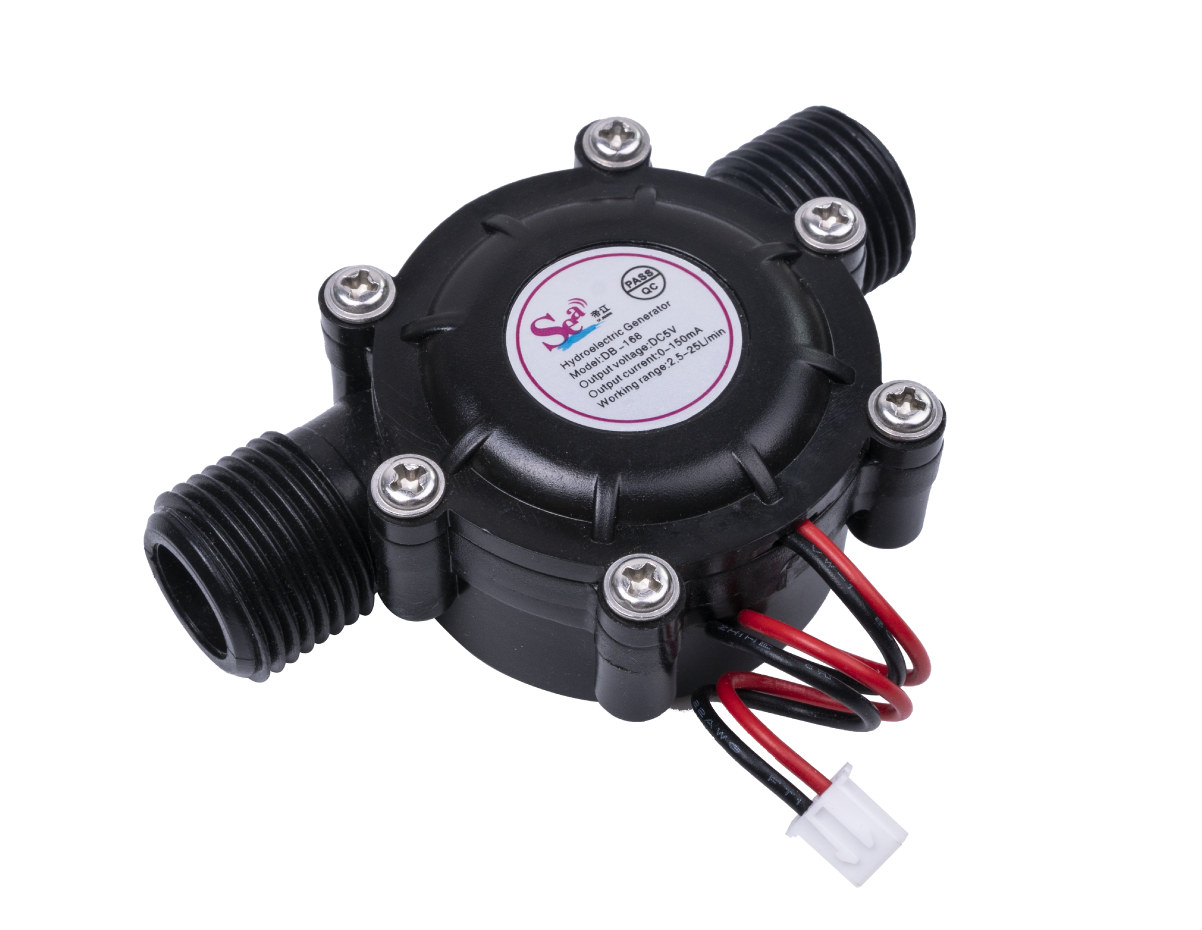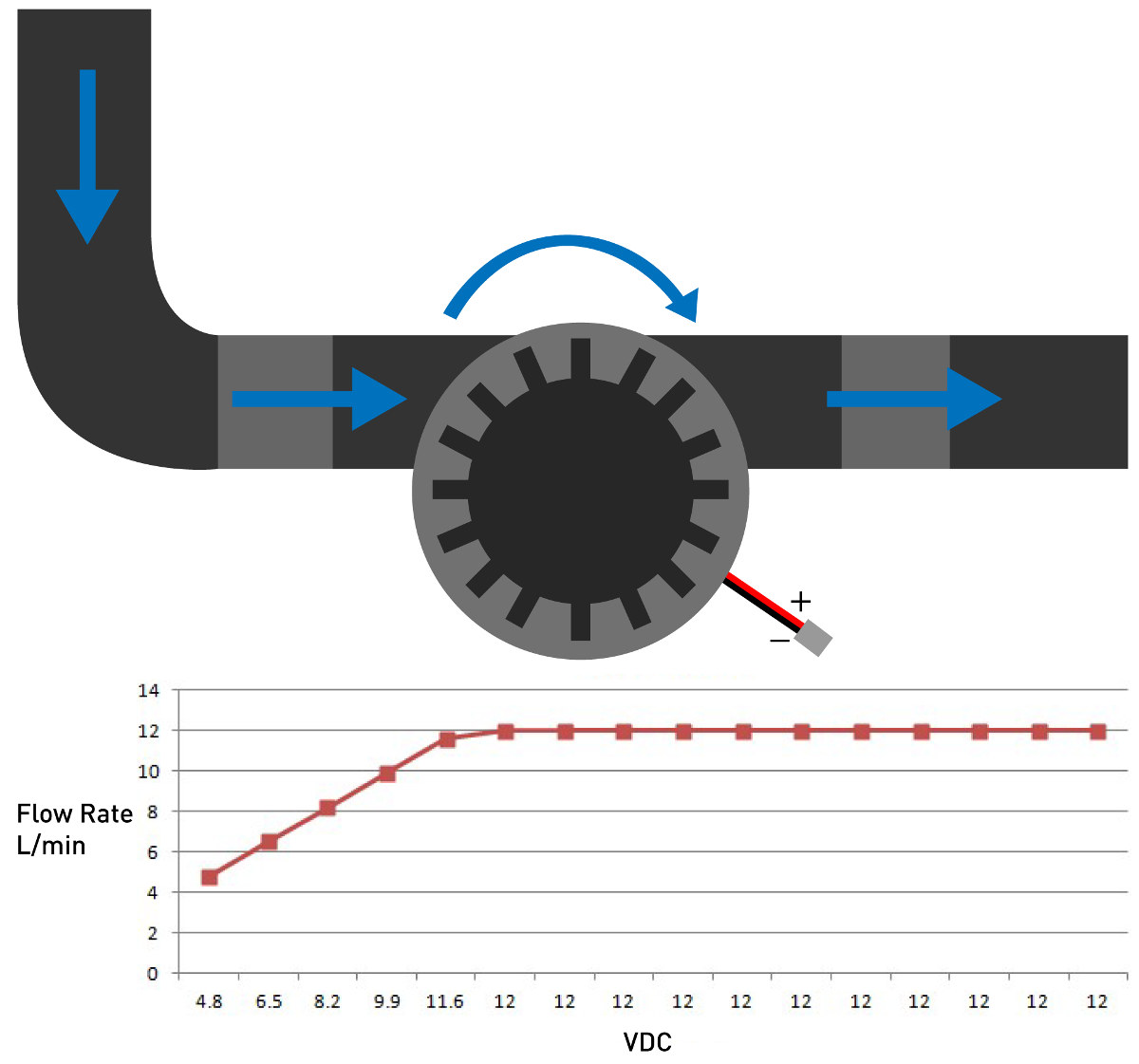I follow some online IoT groups, and many of the projects are related to smart farming and greenhouses. People may want to monitor temperature and humidity and other environmental factors using battery-powered sensors.
If there are many of those sensors, this can be cumbersome to either replace or recharge batteries, and that increases maintenance costs. But since plants usually need to be watered there should be some water pipes around, and I’ve just found out some low-cost micro water turbines that can generate 5V or 12V when connected to a water pipe and water flows.

- Output Voltage
- 5V model
- 5 +/- 0.3 VDC water flow 10+ L / min
- 3 to 5 +/- 0.3 VDC Water flow 4L / min
- 3 +/- 0.25 VDC Water flow 3.5L / min
- 12V model
- 12 +/- 0.3 VDC water flow 10+ L / min
- 5 12 +/- 0.3 VDC Water flow 4L / min
- 3 +/- 0.25 VDC Water flow 3.5L / min
- 5V model
- G1/2” Thread
- Flow range – 3.5 to 20L / min (pressure 0.05-0.2mpa)
- Maximum Output Current – 150mA
- Resistance Between Line – 10.5 ± 0.5Ω
- Insulation Resistance – 10MΩ
- Maximum Working Pressure – 1.2 Mpa
- Outlet Closed Highest Pressure Resistance – 0.6Mpa
- Start Water Pressure – 0.05Mpa
- Axial Clearance – Approx. 0.2~1.0mm
- Mechanical Noise – ≤ 55dB
- Generator Single Volume – 90g
- Generator Life – ≥ 3000 hours
- Working Temperature Range – 0 80 ° C
- Storage temperature – -25 65 ° C
- Maximum allowable ambient temperature – 100 ° C max for 30 min
The microturbine embeds some small blades to make the turbine rotate and generate electricity. Note that with a maximum current of 150mA, charging won’t be fast, so those models are only really suitable for low power devices. The output voltage also depends on the flow rate as shown in the chart below.

It can be connected to a faucet or at the bottom of a water tank to ensure enough pressure, although it might also be possible to use rainwater as well depending on the size of the roof and amount of precipitations in the area.
You’d have to use the generator with a battery accompanied by a charge management chip:
There are two kinds of lithium batteries in the market, one with the charge management chip and one without the charge management chip. The charge management chip is needed for charging lithium batteries or otherwise will easily explode.
If you are interested Seeed Studio sell either 5V or 12V micro water turbine for $6.90 plus shipping. You’ll also find various micro-hydro generators on Aliexpress, Banggood, and other websites.

Jean-Luc started CNX Software in 2010 as a part-time endeavor, before quitting his job as a software engineering manager, and starting to write daily news, and reviews full time later in 2011.
Support CNX Software! Donate via cryptocurrencies, become a Patron on Patreon, or purchase goods on Amazon or Aliexpress





That’s very interesting. I’ve been wondering how much energy could be harvested from a faucet after seeing some stupid gadgets producing colored light to be plugged on a shower… So now we have numbers. Let’s assume the device can really deliver 5V*150mA at 10L/min, that’s 750mW. With a good buck converter as the charger with 85% efficiency, that’s still 637mW into a battery, or 1.06Wh for every 1000L of water, which is just enough to recharge a small 250-300mAh LiPo battery. It could possibly be used to power a water consumption meter or a remote probe to periodically report the… Read more »
I was thinking that a combination turbine and hall effect sensor, together with an energy harvesting circuit and a capacitor, would make a reasonable water meter. You only really care about measuring the hall pulses when the water is flowing, in other words, you have power when you need it. Capture the pulses, then report when you have enough spare power to send a wireless signal.
“output voltage also depends on the flow rate as shown in the chart below”
Thats a terrible chart! On the chart it looks like the flow rate depends on the voltage. And why is the chart extended to the right when the x-axis doesn’t change?
They flipped axis. I think they wanted to report voltage vs flow, and show that the output is regulated, but someone messed up with the legends and values given that the turn point is 12v at 12L/mn.
Did you see the generator life? 3’000 hours – that’s half a year …
>one with the charge management chip and one without the charge management chip.
It sounds like they are talking about lipos with under/over voltage protection chips. Those aren’t really there to replace a charger.
I think you probably want something like the RT9525GQW.
Hi Jean,
could you please name some of the IoT groups you follow? Thank you.
Yes, but those are mostly Thailand based… and on Facebook: SMEoT, NB-IoT Thailand Community, and LoRaWan Thailand